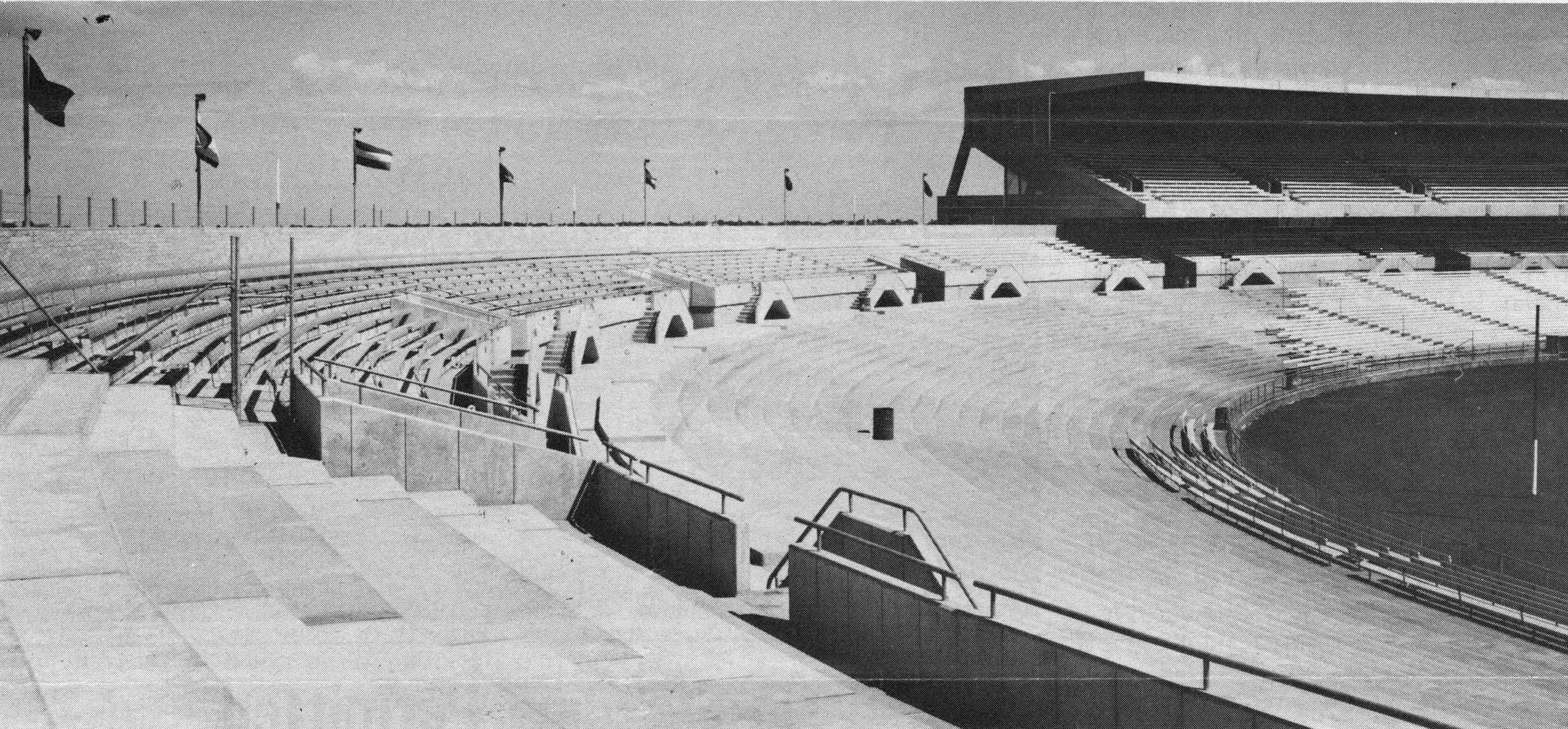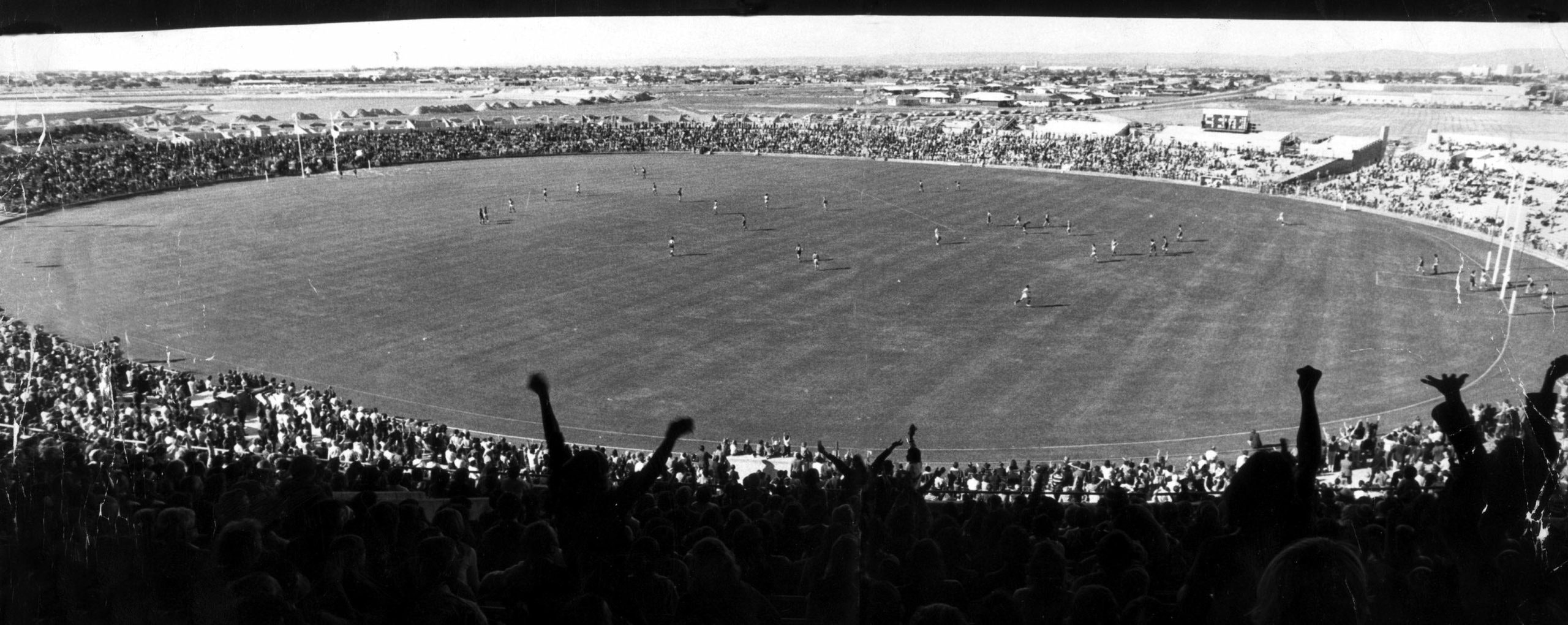
Football Park 50 Years – From Go to Whoa
By PETER ARGENT AND PETER CORNWALL
Football Park, South Australia’s home of football for 40 seasons, will always hold a special place in this State’s history and in most footy lovers’ hearts – and Leigh Whicker was part of it from go to whoa.
Fifty years ago Footy Park saw its first action as Central District beat North Adelaide and Whicker recalled the stadium “was far from finished”.
While the ground was rushed into an opening before it was in any way state-of-the-art, the playing surface was impressive. Much-loved SA governor Sir Mark Oliphant had symbolically cast the first seed on the newly-prepared surface on 31 October 1972, after being presented with the ‘seed bag’ by SANFL senior vice-president Max Basheer, who went on to be the league’s longest-serving president, from 1978-2003, playing a major role in the establishment and development of league headquarters.
SA’s Aussie rules home from 1974-2013, Football Park came about after years of the SANFL and SACA being uncomfortable bedfellows, cricket ruling the roost at Adelaide Oval.
“The relationship between the cricket association (SACA) and the SANFL – well, there was no relationship, quite frankly,” Whicker said, as Football Park’s first game was recalled at a celebratory lunch before the opening round clash between the Bulldogs and Roosters at Prospect Oval.
“The conditions the league played under at Adelaide Oval, those financial conditions were just unacceptable. It was decided by the league directors there should be an independent home of footy.”

SA governor Sir Mark Oliphant casts the first seed at Football Park in 1972, after being presented with the ‘seed bag’ by Max Basheer.
A former Sturt league footballer who played in the 1965 grand final before having his career cut short by injury, he then became the Double Blues’ secretary/general manager.
Whicker, who has been on a list of SANFL committees as long as your arm, was on the Football Park steering committee from 1972-74.
“We made the bold decision to appoint a small sub-committee including Max Basheer, Don Brebner (SANFL president 1966-78) and Ray Kutcher as project director,” said Whicker, recalling the selection of swamp lands at West Lakes.
The ‘swamp lands’ became ‘home’ for Whicker for decades as catering manager (1974-81), functions manager (1981-82), stadium manager (1983-84) and then SANFL general manager, from 1984-2014.
When the 1974 league program was released games were scheduled for Football Park from Round 1 – the first game was proposed to be West Torrens v Woodville – but the opening date was pushed back as the project was hit by delays heightened by vandalism and a concrete strike.
“The whole operation was a struggle,” Whicker said.
The league scoffed at suggestions Football Park was a gamble. It rated the move a “calculated business risk”.
While that may have proved right, there must have been some concerns. The decision to play on May 4 was made just five days before the game and even then fingers were crossed.
“North and Central will play here on Saturday provided there are no unforeseen hitches,” Kutcher said in The Advertiser. “As late as Friday we could still switch the game if circumstances demanded.”
He wanted to play the game and Sturt v West Torrens the following week because “we need a couple of ‘dummy runs’ before the interstate game on May 18”.

SANFL’s long-serving Leigh Whicker at Football Park.
West Lakes Boulevard was opened just two days before Football Park’s first game and maps were featured in the Budget and newspapers to make sure the first fans found their way to the ground.
“There were only a few seats in the outer. Half of the grandstand was cordoned off from building works,” Whicker recalled of the Central-North clash.
“They were pioneering days – a lot of people gave freely of their time to get that stadium up and running. There was a lot of pride about that, because it was the home of our football. Football and footballers have enjoyed the benefits of that.
“For many years Football Park and the SANFL didn’t receive one cent of government money – not one cent until more recent years. The stadium was built on the good will (of those pioneers) and our marvellous sponsors.”
Football Park would see another revolution with Kerry Packer’s World Series cricket played at the venue, featuring a pair of ‘Super Tests’ and four 50-over one-dayers between 1977 and ’79.
After protracted negotiations with the SA State Government and the local council, and opposition from residents leading to a Royal Commission, the SANFL started building the ground’s four light towers in late 1983, the lights switched on in ’84. This time West Torrens and Woodville did get the honour of playing in the historic clash, an Escort Cup game on March 2.
The stadium hosted International Rules games between Australia and Ireland, there were big soccer games including the Socceroos v Juventus and it was used for epic rock concerts featuring Beach Boys, KISS, Rolling Stones, Abba, Neil Diamond, Alice Cooper, Dire Straits, Electric Light Orchestra, U2, Elton John, Robbie Williams and Bon Jovi, with the final concert being One Direction in February 2015.
When you drive down West Lakes Boulevard these days, surrounded by housing developments and shops and near the Adelaide Crows’ offices and training ground, it’s hard to believe this was where 80,000 SA footy fans in 1976 had packed together to see a Rick Davies-inspired Sturt stun Port Adelaide in a grand final still talked about five decades later.








